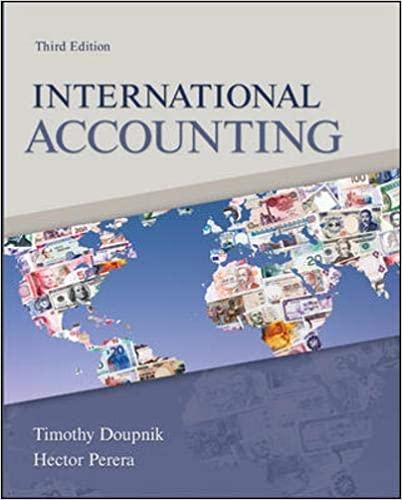S. A. Harrington Company is a U.S.-based company that prepares its consolidated financial statements in accordance with
Question:
S. A. Harrington Company is a U.S.-based company that prepares its consolidated financial statements in accordance with U.S. GAAP. The company reported income in 2011 of $5,000,000 and stockholders’ equity at December 31, 2011, of $40,000,000.
The CFO of S. A. Harrington has learned that the U.S. Securities and Exchange Commission is considering requiring U.S. companies to use IFRS in preparing consolidated financial statements. The company wishes to determine the impact that a switch to IFRS would have on its financial statements and has engaged you to prepare a reconciliation of income and stockholders’ equity from U.S. GAAP to IFRS. You have identified the following five areas in which S. A. Harrington’s accounting principles based on U.S. GAAP differ from IFRS.
1. Restructuring
2. Pension plan
3. Stock options
4. Revenue recognition
5. Bonds payable
The CFO provides the following information with respect to each of these accounting differences.
Restructuring Provision The company publicly announced a restructuring plan in 2011 that created a valid expectation on the part of the employees to be terminated that the company will carry out the restructuring. The company estimated that the restructuring would cost $300,000. No legal obligation to restructure exists as of December 31, 2011.
Pension Plan
In 2009, the company amended its pension plan, creating a past service cost of $60,000. Half of the past service cost was attributable to already vested employees who had an average remaining service life of 15 years, and half of the past service cost was attributable to nonvested employees who, on average, had two more years until vesting. The company has no retired employees.
Stock Options S tock options were granted to key officers on January 1, 2011. The grant date fair value per option was $10, and a total of 9,000 options were granted. The options vest in equal installments over three years: one-third vest in 2010, one-third in 2011, and one-third in 2012. The company uses a straight-line method to recognize compensation expense related to stock options.
Revenue Recognition
The company entered into a contract in 2011 to provide engineering services to a long-term customer over a 12-month period. The fixed price is $250,000, and the company estimates with a high degree of reliability that the project is 30 percent complete at the end of 2011.
Step by Step Answer:






